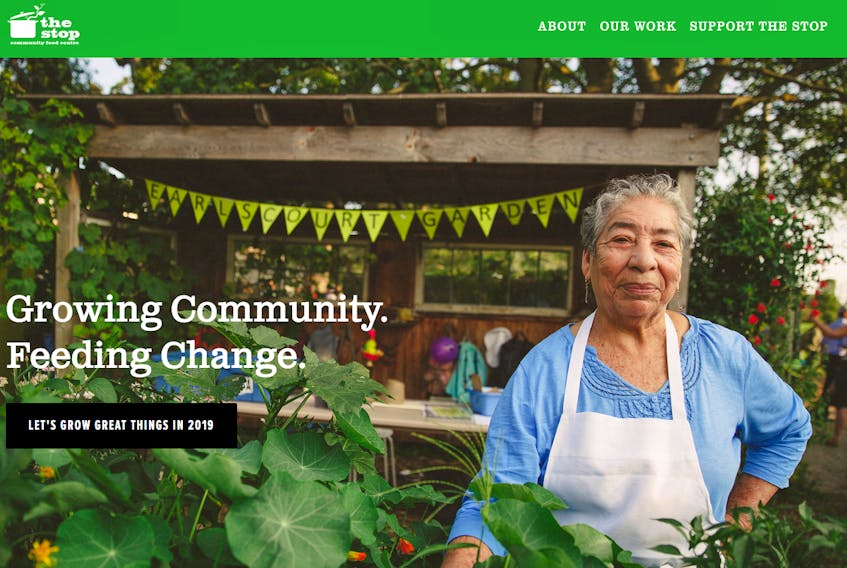“As long as poverty, injustice and gross inequality persist in our world, none of us can truly rest.” — Nelson Mandela
It was nourishment for the soul to see shoppers at a St. John’s supermarket last Saturday stepping forward to give money and groceries during one of many food drives held for the Community Food Sharing Association after its devastating warehouse fire on Jan. 30.

From a small boy proffering a box of macaroni to a woman who gave a case each of peanut butter and diced tomatoes, every food donation and every dollar seemed to be given with genuine generosity and received with great appreciation.
“I know what it’s like to be hungry,” one man confided, before placing a bag of tinned beans in the donation bin.
“Happy to help,” many people said.
(As an aside, some people also said, “Only Newfoundlanders and Labradorians would come together like this,” or “You wouldn’t get this response on the mainland.” Well, we’re generous souls, true enough, but hardly unique in that regard. Try Googling “Community rallies to collect food” and you’ll get two million responses or so.)
It’s been heartening to see people come together to help replenish Community Food Sharing’s badly needed supplies, yet dispiriting to realize the scope of the need.
What happens if another crisis cripples the food distribution chain? Can communities step up each time, or is there a tipping point?
And why are so many people in this province going hungry?
Food banks are wonderful organizations run largely by big-hearted volunteers and precious few paid staff. The Community Food Sharing Association’s unceasing efforts have made general manager Eg Walters a household name.
What happens if another crisis cripples the food distribution chain? Can communities step up each time, or is there a tipping point?
So this is not meant to criticize the vital work they do, by any means. But as The Telegram’s Feb. 2nd editorial (“Food for thought”) and Brian Jones’ Feb. 6th column (“Food banks, the forgotten failure”) pointed out, food banks are a bandage on the gaping wound that is poverty — a problem governments seem to have left squarely on the doorstep of the charitable sector.
“These days we rarely hear a peep about government responsibility for ensuring citizens’ access to healthy food — let alone the basic right to food,” Toronto food activist Nick Saul and writer/editor Andrea Curtis write in their 2013 book “The Stop: How the Fight for Good Food Transformed a Community and Inspired a Movement.”
They document how The Stop, a community food centre in Toronto, evolved from a food bank into instrument of change, working to “increase access to healthy food in a manner that maintains dignity, builds health and community, and challenges inequality.”
With its community food centre and fresh food barn, The Stop offers programs that educate people about food insecurity, nutrition, action and advocacy, and how to grow food in communal gardens. It holds cooking classes with menus that reflect the cultural diversity of the communities it serves. It offers access to fresh food, providing cooking demonstrations and recipes, and a drop-in space where people can have a meal, socialize and find out about resources they need in the community.
While this model likely wouldn’t work in rural areas, it’s being adopted in other cities, including the Dartmouth North Community Food Centre in Nova Scotia and the NorWest Co-op Community Food Centre in Winnipeg. Both are members of Community Food Centres Canada, a network that shares the goal of “building vibrant centres and programs in low-income communities where food is used as a tool to build health, belonging and social justice.”
Like Bridges to Hope in St. John’s, these centres see healthy food as a key element in a holistic approach to combatting poverty, which also encompasses poor health, a lack of safe and affordable housing, and social isolation.
While politicians pontificate about strategic plans, these centres are taking a multi-pronged approach in tackling a multi-headed beast. Governments should use them as a model of what works, and fund them.
Because as Saul and Curtis point out in their book, “Only sustained, thoughtful, prevention-focused social and economic policy will build a more equitable society.”
Recent columns by this author
PAM FRAMPTON: In defence of journalism
PAM FRAMPTON: Harold and Barbara — two lives in the balance
PAM FRAMPTON: Harold and Barbara — a fork in the road
Related lilnks
The Stop Community Food Centre
Pam Frampton is a columnist whose work is published in The Western Star and The Telegram. Email [email protected]. Twitter: pam_frampton









